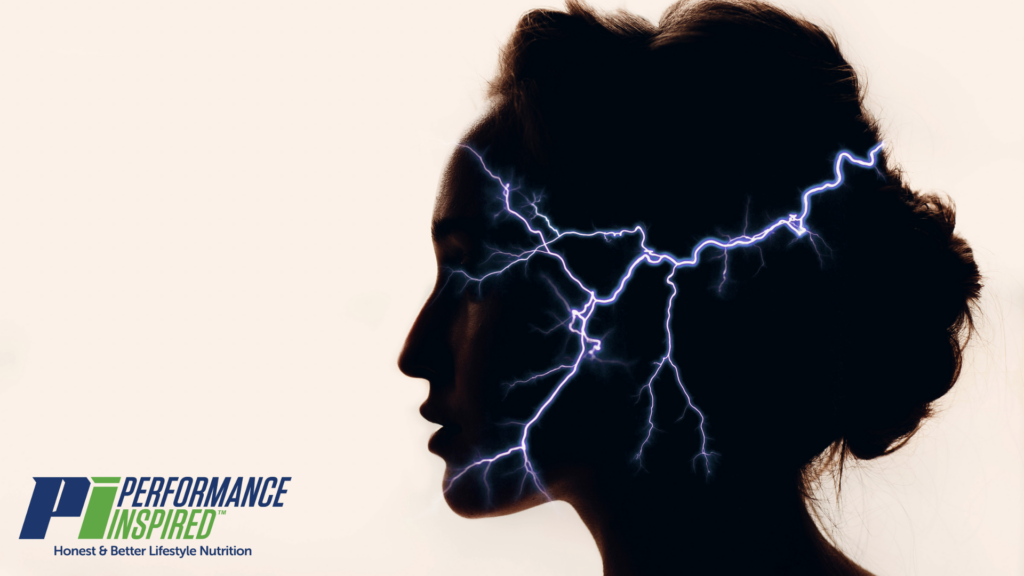Watch Out for Headache Triggers!

Even though Headache/Migraine Awareness Month was June often headaches increase during the summer months due to various triggers. Since a headache is something nearly everyone has experienced, we at PI Nutrition wanted to examine the causes and triggers and offer suggestions for how to remedy them.
A headache is a pain in your head or face; the pain can be severe, throbbing, dull, or anywhere in between. According to the Cleveland Clinic, “Headache pain results from signals interacting among your brain, blood vessels and surrounding nerves. During a headache, multiple mechanisms activate specific nerves that affect muscles and blood vessels. These nerves send pain signals to your brain, causing a headache.”
A headache is classified as a migraine when that pain is localized to one side of the head and is accompanied by intense pain. Those who suffer from migraines also often feel nauseated, they may vomit, and they may be sensitive to either light or sound. While headaches usually last up to a few hours, migraines can last for days.
Triggers for both migraines and headaches vary from person to person but can include:
- Alcohol
- Allergies
- Stress
- Lack of sleep
- Some types of food (like cheese, chocolates, or fried food)
- Hormones
- Eye strain
- Intense/bright light
- Strong scents
- Dehydration
- Weather
- Poor posture
- Smoking
Keeping a journal of when your headaches occur is vital to determining the cause of your headaches so that you can begin to eliminate what is causing pain.
Over-the-counter medications usually work for headaches, but often migraines will require a prescription. If OTC meds don’t help you, talk to your doctor.
Lifestyle changes
Once you determine what causes your headaches, you will want to take steps to avoid those triggers. While medications are often helpful, we at PI Nutrition want to help you stop the pain before it starts.
Lifestyle changes can be difficult, especially if you find that something you like (such as red wine or cheese) is a trigger. Keep in mind that there’s a whole world of substitutes out there. For example, there’s wine without sulfates, which have been known to trigger headaches. There are different kinds of cheese—made with milk from different animals. And there are a variety of alternatives for just about any food.
Yet while you can make certain lifestyle changes to try to keep yourself from getting headaches or migraines, sometimes they just happen. For instance, it’s not uncommon for people to sleep on their neck the “wrong” way and to wake up with a headache. If this happens, check your pillow. Maybe you need one with better support. Maybe you need two. Maybe you need a mattress that lifts your upper body a bit. Try different ways to sleep that might keep the headache from beginning.
Self-care
If you get a migraine or a headache, the first thing you should do is take care of yourself or allow your significant other to take care of you. It’s no fun walking around with a headache, and if you are in extreme pain, you cannot be yourself or enjoy your days. Sometimes you cannot even function properly or work.
So take meds if you need them. Lie in a dark room. Hydrate! Oftentimes we get headaches because we haven’t had enough water or because we need more electrolytes. Sometimes headaches result when a person is low in potassium. If that’s the case, drink a bottle of Performance Inspired Nutrition’s Ready2Go protein water. It offers 110 mg of potassium and the hydration you need.
You could also put a cold cloth over your head and take a nap. Some people like to listen to soft music. You could also try supplements. Magnesium, CoQ10, and riboflavin have been known to either reduce the number of migraines people have or to prevent them from happening. As always, talk to your doctor before you begin any supplements, as they could interact with other meds you are taking.
In addition, some people have found that acupuncture or massages help. Both are great to help reduce stress and offer relaxation.
The main point is to get to know your body and to determine what triggers your headaches or migraines. Then create a plan of action, follow it, and feel better!

